|
|
|
| |
|
|
|
|
|
|
|
| |
|
|
|
|
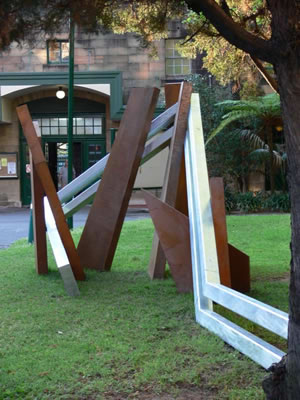 |
|
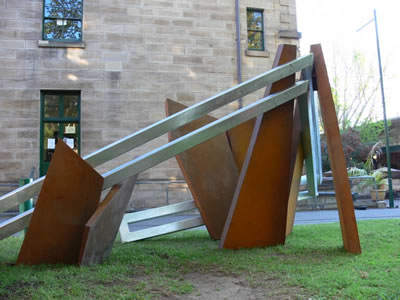 |
| |
|
|
|
|
| |
Early days – reefs are large and regular, they spread wherever the sea temperatures are supportive of coral life. The sea is clean and under-utilised, an unconstrained and open environment into which life spreads exponentially. Reef modules are strung like notes along the musical score of the ocean. There is plenty of space to spread to and opportunity to grow and reproduce. Many unused potential habitats exist across the length and breadth of the ocean, waiting to be filled. Occasionally a reef will show some genetic variation: the early signs of evolutionary change, which will enable new habitats to be explored. |
|
| |
|
|
|
|
Reef2 - Consolidation
Hot dip galvanised mild steel and oxidised corten steel
2006 (2.5metres h x 6.0m x 1.8m) |
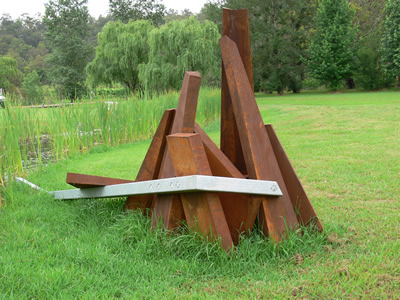 |
|
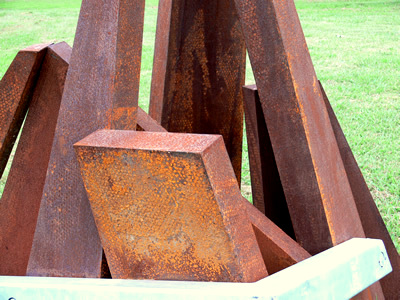 |
| |
|
|
|
|
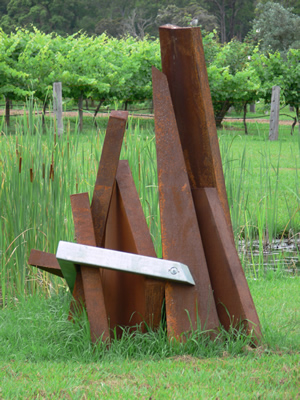 |
|
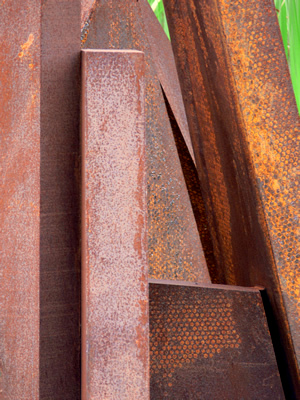 |
| |
|
|
|
|
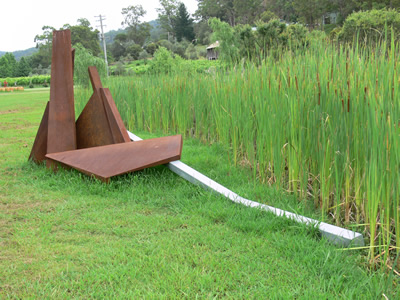 |
|
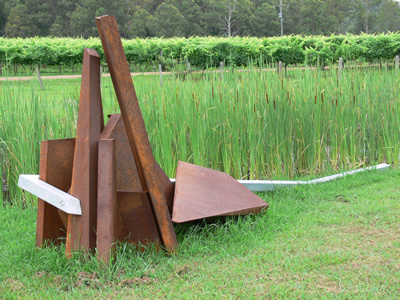 |
| |
|
|
|
|
| |
The sea is becoming over-utilised. The length and breadth of the ocean which is able to support coral life is shrinking – climate change, pollution and over-development all reduce the potential available habitats for coral reefs. Reefs are no longer as widespread and now survive in severely circumscribed spaces. They exist as pockets of coral life, pushing against each other, growing next to and on top of their neighbours. Environmental pressures cause unproductive genetic variants to become widespread. Some reefs are no longer regular shapes and structures. The productive, habitable ocean is shrinking and is now a smaller, less dynamic version of its former self. Reefs consolidate, are hemmed in by a smaller, under-productive sea. |
|
| |
|
|
|
|
Reef3 - Extinction
Hot dip galvanised mild steel and oxidised corten steel
2006 (2.5metres h x 6.0m x 2.1m) |
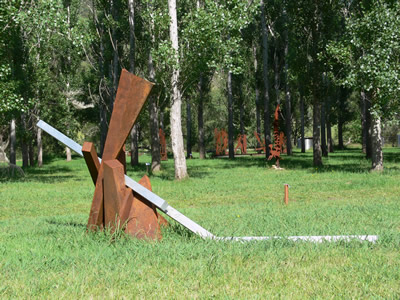 |
|
 |
| |
|
|
|
|
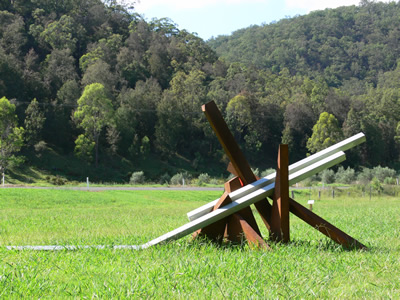 |
|
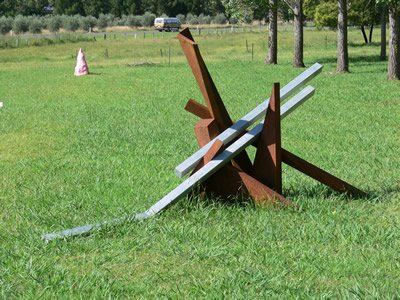 |
| |
|
|
|
|
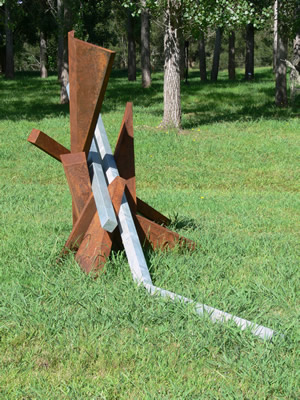 |
|
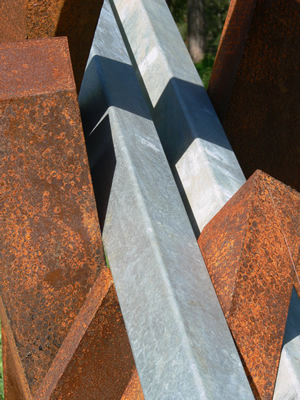 |
| |
|
|
|
|
| |
The sea is no longer a productive supporter of life – it is dying. It becomes the reefs' enemy as its polluted waters mutate and kill the polyps that make up the coral. Violent cataclysms ensue as other ocean life vies with the reefs for what little space and resources remain. Reefs break up, violent ocean storms pound away at their structure - they fracture, collapse. What remains is violently, physically and genetically distorted – no longer the large, regular structures they once were, reefs are now smaller, shrinking, distorted, clinging to a perilous existence and subject to repeated attacks by the now hostile ocean. |
|
| |
|
|
|
|
Reef22
Hot dip galvanised mild steel and oxidised corten steel
2008 (2.5metres h x 4.0m x 1.8m) |
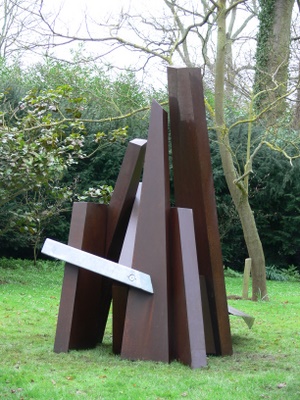 |
|
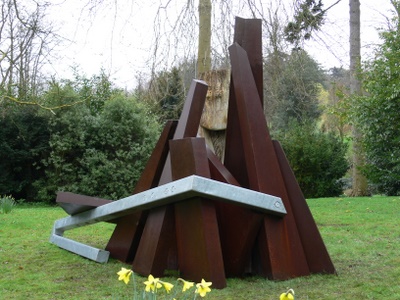 |
| |
|
|
|
|
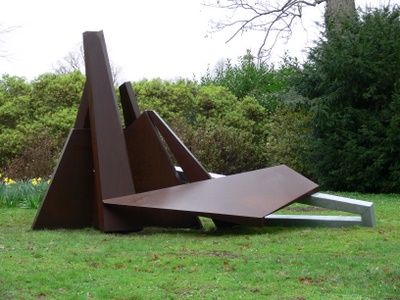 |
|
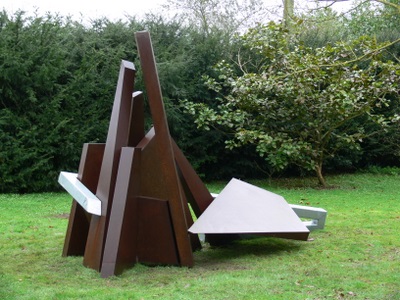 |
| |
|
|
|
|
| |
The Reef series of sculptures explores the dynamic flow and force of the ocean's waves, currents, tsunamis and storms and their interaction with marine geographic and geological features – reefs, coral, seashore archipelagos, seaweed forests. This body of work is significantly influenced by mythical and archaeological imagery, such as the Chimaera and ancient megalithic structures.
The steel is highly worked: cut, shaped, welded and bolted; hot-dip galvanized, oxidised, patinated. But still recognisably steel. Surface treatments retain the 'grain' and other marks of the making process and complex surface patinas develop naturally with age. Constructed through additive joining processes, the components are pre-formed and joined symbiotically – they relate to each other as objects and surfaces; as individual entities and as parts of the whole.
Reef22 is the final work in this series. It pursues that moment between balance and flight where the precise distribution of mass, form and space activate the sculpture – a creative engineering that aims to imbue a potency of energy and of a crushing weight.
|
|
| |
|
|
|
|
| |
|
|
|
|
|